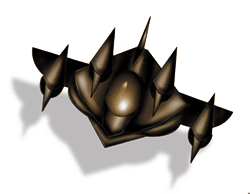|
DRONE
JETS
Observation
crafts without pilots (drones) are extremely good value as regards cost
versus provision of a service and they are nightly being used more and
more for their small radar signature, their low cost, ease of operation
and also so as not to endanger a pilot's life. Our propulsion drone
benefits from a double-arrowed wing to optimize its aerodynamic qualities
at high speed. Ail of these optronic captors (infrared, ultraviolet and
various wavelengths, etc., active and passive) are in the central, bulbous
section of the fuselage.
|

|